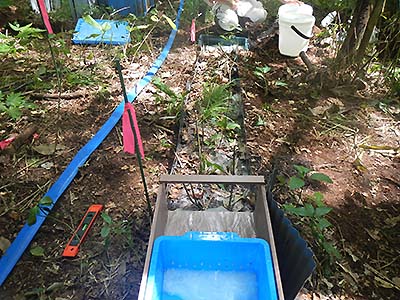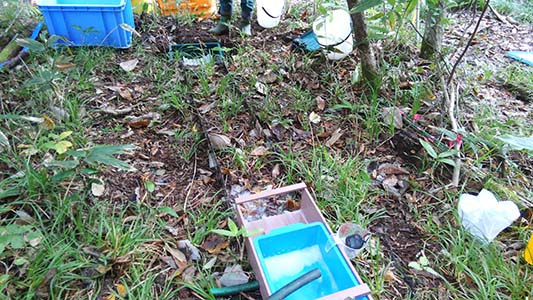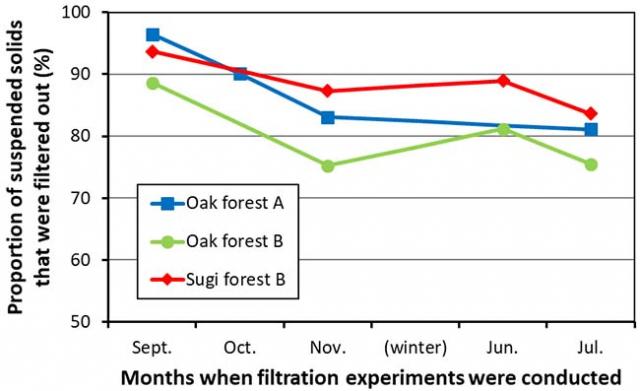Home > Research > Research Results > Research Results 2020 > Forests are good filters for turbid water, but the clogging of soil with suspended solids degrades that function
Update:June 15, 2020
Main content starts here.
Forests are good filters for turbid water, but the clogging of soil with suspended solids degrades that function
| Article title |
Field experiments for turbid water filtration in a deciduous broad-leaved stand and a Sugi plantation stand in the Tohoku Region. (In Japanese with English summary) |
|---|---|
| Author (affiliation) |
Toshio Abe (a), Takashi Okamoto (b), Yoshiki Shinomiya (c) (a) Tohoku Research Center, FFPRI, Morioka, Iwate, Japan. (b) Department of Disaster Prevention, Meteorology and Hydrology, FFPRI, Tsukuba, Ibaraki, Japan. (c) Center for Forest Restoration and Radioecology, FFPRI, Tsukuba, Ibaraki, Japan. |
| Publication Journal |
Tohoku Journal of Forest Science, 25(1), 1-9, March 2020, The Tohoku Society of Forest Science |
| Content introduction |
When the water from a stream becomes extremely turbid, it has an adverse effect on such things as the quality of tap water and the habitats of aquatic organisms. This is especially the case for stream sources in mountainous areas when the ground surface is disturbed by landslides, forest cutting, etc., because water flow becomes extremely turbid when it rains. Therefore, water in forests should be filtered so that turbid water does not flow directly into streams. Against this backdrop, experiments were conducted in a broadleaved deciduous forest of Japanese oak and a Sugi cedar stand in Iwate Prefecture by artificially flowing turbid water down slopes to study how turbid water filtration functions of forest floor change through time. In September, when the first experiment was begun, the filtration functions of the study areas were extremely high, and more than 90% of the suspended solids in the turbid water were filtered out. However, when the experiments were repeated in October and November, we could see that suspended solids had collected on the surface soil layer, and the pore spaces had become clogged, which gradually reduced the filtration functions. When experiments were conducted about a half year later in the following June (skipping the winter months), we observed that the filtration functions had recovered slightly, but in cases where they had decreased dramatically, they needed a long time to recover. In addition, the greater the infiltration capacity of the soil was, the greater the turbid water filtration functions tended to be. The filtration rate of forests having the same area and during the same time was expressed as a monotonically increasing function (quadratic formula) of infiltration capacity into soil. As a result, it appeared to be possible to evaluate the relative differences in filtration functions merely by measuring the infiltration capacity. The results of the present research suggested that the turbid water filtration functions of the forests were high, but when water flowed into the same area several times within a short period, there was concern that all of it could not be filtered. Therefore, this finding must be kept in mind when considering measures to prevent the outflow of turbid water in forest zones.
Photos:Views of a turbid water filtration experiment in a broadleaved deciduous forest. Because kaolin clay was used as the suspended solid, the turbid water turned a greenish white.
Figure: Changes in filtration functions when turbid water filtration experiments were repeated |
Copyright © Forest Research and Management Organization. All rights reserved.




